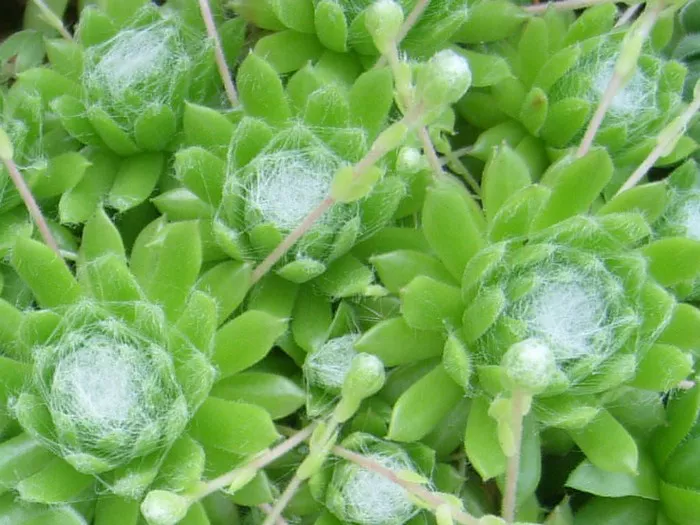Cobweb succulents, scientifically known as Sempervivum arachnoideum, are fascinating plants with their distinctive cobweb-like hairs that adorn their rosettes. These hardy succulents are not only beautiful additions to any garden or indoor space but are also relatively easy to propagate. Whether you’re a seasoned gardener or a novice enthusiast, propagating cobweb succulents can be a rewarding and enjoyable experience. In this comprehensive guide, we’ll delve into the various methods and techniques for successfully propagating these unique plants.
Understanding Cobweb Succulents
Before diving into the propagation methods, it’s essential to have a basic understanding of cobweb succulents. Native to the mountainous regions of Europe, particularly the Alps and the Carpathians, Sempervivum arachnoideum is a species of flowering plant in the Crassulaceae family. It typically forms compact rosettes of fleshy leaves that are covered in fine, cobweb-like hairs, hence its common name.
Cobweb succulents are well-suited to various growing conditions, including full sun to partial shade and well-draining soil. They are drought-tolerant plants, making them ideal for xeriscaping or low-water gardens. Additionally, they are cold-hardy and can withstand freezing temperatures, which makes them suitable for outdoor cultivation in temperate climates.
Why Propagate Cobweb Succulents?
Propagation is the process of creating new plants from existing ones, and it offers several benefits for cobweb succulent enthusiasts:
1. Expansion of Collection: Propagating cobweb succulents allows you to increase your collection without having to purchase new plants.
2. Sharing with Others: Propagated plants make excellent gifts for friends and fellow gardening enthusiasts.
3. Preservation of Genetic Diversity: By propagating cobweb succulents, you can preserve specific cultivars or varieties that may be rare or unique.
4. Experimentation and Learning: Propagation provides an opportunity to experiment with different techniques and learn more about the biology of these plants.
Propagation Methods
There are several methods for propagating cobweb succulents, each with its own advantages and considerations. The most common methods include division, offsets, leaf cuttings, and seed propagation.
1. Division
Division involves separating the offsets or “pups” that form around the base of mature cobweb succulents. This method is simple and effective, especially for larger clumps of plants.
Procedure:
- Select a healthy, mature cobweb succulent with multiple offsets.
- Carefully remove the plant from its pot or garden bed, being mindful not to damage the roots.
- Gently tease apart the offsets from the main plant, ensuring that each pup has its own set of roots.
- Plant the offsets in well-draining soil, either in individual pots or directly in the garden bed.
- Water lightly and place the newly propagated plants in a location with bright, indirect sunlight.
2. Offsets
Offsets are miniature versions of the parent plant that grow around the base of mature cobweb succulents. They can be easily detached and propagated to create new plants.
Procedure:
- Identify healthy offsets growing around the base of the parent plant.
- Gently twist or cut the offsets from the main plant using clean, sharp scissors or pruning shears.
- Allow the cut ends to callus over for a day or two to prevent rotting.
- Plant the offsets in well-draining soil and water lightly.
- Place the newly propagated offsets in a location with bright, indirect sunlight and monitor their growth.
3. Leaf Cuttings
Leaf cuttings involve removing individual leaves from the parent plant and allowing them to root and produce new growth. While this method takes longer than division or offsets, it can be a fun and rewarding way to propagate cobweb succulents.
Procedure:
- Select healthy leaves from the outer rosettes of the parent plant.
- Gently twist or cut the leaves from the plant, ensuring that each cutting is clean and intact.
- Allow the cut ends of the leaves to callus over for a day or two.
- Plant the leaf cuttings in well-draining soil, burying the cut ends slightly.
- Water sparingly to avoid rotting, and place the cuttings in a location with bright, indirect sunlight.
- Over time, new roots will develop from the cut ends of the leaves, and new rosettes will emerge from the base.
4. Seed Propagation
Seed propagation is a more advanced method that involves sowing seeds harvested from mature cobweb succulents. While it requires patience and careful attention to environmental conditions, seed propagation offers the opportunity to create new hybrids and cultivars.
Procedure:
- Harvest seeds from mature cobweb succulents by allowing the flower stalks to dry and collecting the seeds.
- Sow the seeds in a seed-starting mix or well-draining soil.
- Keep the soil consistently moist but not waterlogged, and provide ample sunlight or artificial light.
- Germination can take several weeks to months, depending on environmental conditions and seed viability.
- Once the seedlings have developed several sets of true leaves, they can be transplanted into individual pots or garden beds.
Tips for Successful Propagation
1. Choose Healthy Plants: Select mature, healthy cobweb succulents for propagation to ensure the success of your efforts.
2. Provide Adequate Drainage: Use pots or containers with drainage holes and well-draining soil to prevent waterlogged conditions, which can lead to root rot.
3. Avoid Overwatering: Cobweb succulents are drought-tolerant plants and are susceptible to rot if overwatered. Water sparingly and allow the soil to dry out between waterings.
4. Monitor Light Levels: Provide ample sunlight for newly propagated plants, but avoid exposing them to direct sunlight, which can cause sunburn.
5. Be Patient: Propagation takes time, so be patient and allow the newly propagated plants to establish themselves before expecting significant growth.
Conclusion
Propagating cobweb succulents is a rewarding endeavor that allows you to expand your collection, share with others, and explore the fascinating world of plant propagation. Whether you choose to propagate through division, offsets, leaf cuttings, or seed propagation, each method offers its own unique challenges and rewards. By following the tips and techniques outlined in this guide, you can successfully propagate cobweb succulents and enjoy their beauty for years to come.


